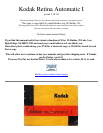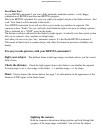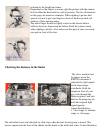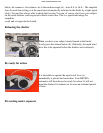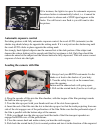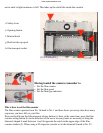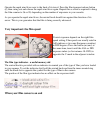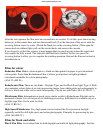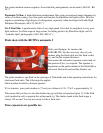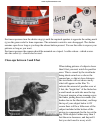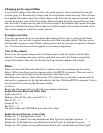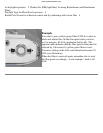
After the last exposure the film must be rewound into its cassette. To do this, press the reversing
button (n) in the camera base and turn the rewind knob (f) in the direction of the arrow until the
reversing button ceases to rotate. (Watch the black dot on the reversing button.) Then open the
camera back in subdued light, pull out the rewind knob, and remove the cassette.
If you forgot to set the film counter, it may happen that you reach a point where the rapid wind
lever cannot be fully wound. This indicates that the film is finished. In this case press the
reversing button to allow you to complete the winding operation. Rewind the film and unload as
described above.
Films for colour
Kodacolor Film: Makes colour negatives, which are then printed on paper to provide natural-
colour prints. Faster than Kodachrome Film, it allows good pictures in lighting hitherto
considered unsuitable for colour photography
(ASA 32 • BS 26 ).
Kodachrome Film: There are two kinds - Daylight Type, and for Photoflood light, Type A. Both
give miniature colour slides at no extra processing charge, from which prints and enlargements in
colour or black-and-white can be made subsequently. Can be use with flash (ASA 10 . BS 21 ').
Ektachrome Film: Intermediate in speed, gives similar results to Kodachrome Film but can be
processed at home. It is sold at prices not including processing. In Britain it is available only as a
daylight type film. Can be used for flash
(ASA 32 BS 26 ').
High-Speed Ektachrome: Very high speed reversal colour film for exposure in daylight
especially useful for dull-light sports and action photography. Primarily for processing by user
(ASA 160 • BS 33 ').
Films for black-and-white
Plus-X Pan Film: An excellent film for both daylight and artificial light photography. Fast but
www.orphancameras.com



